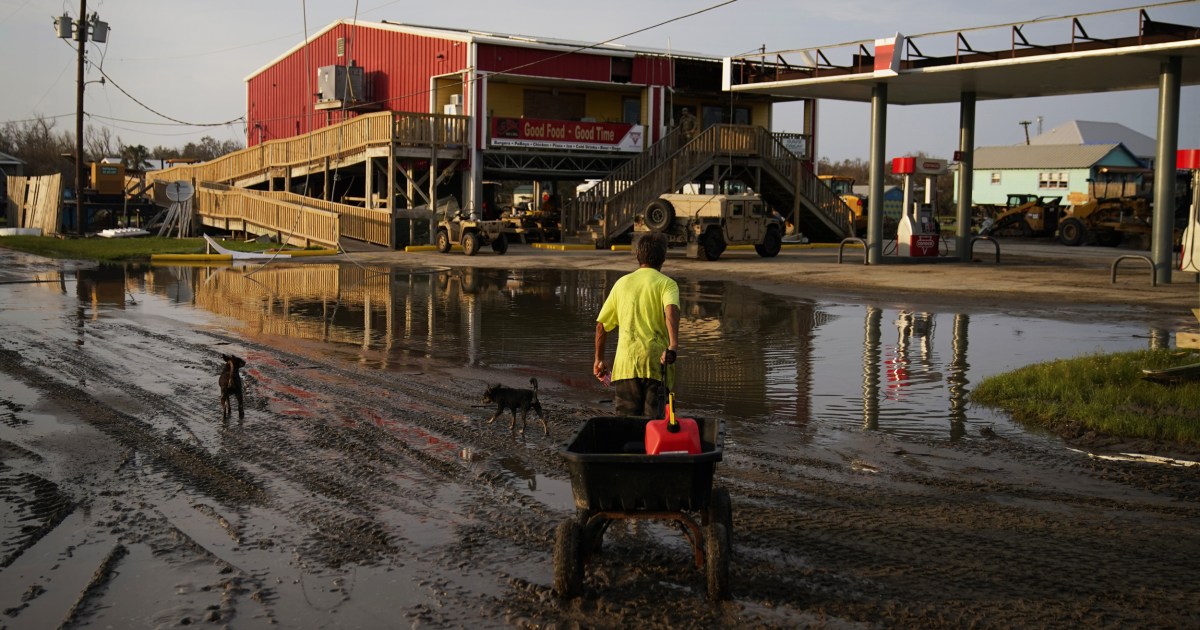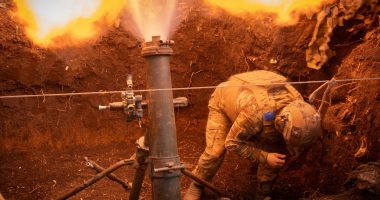
As far as costly disasters go, Hurricane Ida was no Katrina, but the damage inflicted by its rapid escalation and unpredictable path is troubling to observers who say the event reflects a newly ascendent type of storm that is both less predictable and more expensive.
When adjusted for inflation, insured losses from Hurricane Katrina added up to about $86 billion. Early estimates from catastrophe-modeling firm AIR Worldwide suggest that insured losses due to Hurricane Ida will fall in the range of $17 billion to $25 billion. Typically, insured losses as a percentage of total property damage or destruction inflicted by a hurricane is about 40 percent — standard property insurance policies don’t cover damage caused by flooding, which makes up much of the remainder.
Ida’s powerful Category 4 winds changed the equation. “That’s a specific feature to Ida versus historical storms… and the damage pattern and consequences of the impact is highly different if you have wind damage,” said Ernst Rauch, chief climate and geo scientist at reinsurer Munich Re.
“Hurricane Ida was such a wind-centric storm and then a lot of the damage is going to be from wind and not flooding. That wind damage is more apt to be covered by insurance,” said Cathy Seifert, an insurance analyst at CFRA Research. The difference could be significant. Seifert estimated that insured losses could be closer to the industry average across disaster types, which is around 55 percent.
“The big driver of wind loss, aside from wind itself, is damage from trees,” said Tom Sabbatelli-Goodyer, director of event response at catastrophe-modeling firm RMS.
Heavy rains that saturate the ground can loosen trees’ root systems and make them likelier to fall over in strong winds. This time of year, Tom Sabbatelli-Goodyer added, trees have not yet begun to drop their leaves, so they are more top-heavy than they are at the end of hurricane season. “We’re seeing a lot more trees down,” he said. “They fall on houses or make roads impassable, which makes the recovery process longer.”
Insurance companies use finely calibrated models for risk evaluation, honed over decades of disaster research. Climate change is throwing a wrench into them.
Catastrophe-modeling firms work with reinsurers — the insurance companies’ insurance companies — on the front lines of natural disasters. Reinsurers’ profitability depends on their finely calibrated models for risk evaluation, honed over decades of disaster research. Climate change is throwing a wrench into them.
“When it comes to hurricanes or tropical cyclones in the north Atlantic, we see a number of developments of relevance,” Rauch said. “The share of the strongest storms — Category 4 and 5 — has increased relative to the overall number of hurricanes, so we see more stronger storms,” he said. “We also observe, in the North Atlantic in the last 20 to 30 years, an increase in the overall frequency.”
Just within the past decade, Rauch said, hurricanes have become much wetter, saturating areas with heavier rainfall. Storms also are more likely to “stall” and remain over a place for an extended period of time, which also heightens the risk of flood-producing rains.
The time it takes for these storms to develop has accelerated, as well. “Rapid intensification is a wild card. I don’t think it is an item in any community’s evacuation plan,” said Jim Blackburn, professor of environmental law and co-director of the Severe Storm Prevention, Education and Evacuation from Disaster Center at Rice University.
Along with the potential for more severe damage, soaring prices for raw materials such as lumber plus a labor shortage in the construction trades deliver a double hit to the bottom line for rebuilding damaged or destroyed structures.
Demand surge, which can drive up prices for building materials and labor, happens after many disasters, as local hardware stores are cleared out of inventory, for example. This can elevate prices temporarily, but disaster insurance professionals say these blips are both local and temporary in nature.
The pandemic has thrown these expectations into disarray. According to Xactware, a sister company of AIR Worldwide, pandemic-triggered supply chain disruption has made the cost of building materials about 30 percent higher than they were prior to the pandemic.
“I definitely think there’s going to be quite a bit of impact overall. The supply chain is constrained already, and we’re already in peak season,” said Spencer Shute, principal consultant at supply chain and procurement management firm Proxima. “It’s going to be a compound issue.”
Demand for lumber, sheetrock, insulation and the like typically follows a pattern, Shute said. Prices rise and then fall in a seasonal lull. But the shortages triggered by the shutdowns of lumber mills in the early days of the pandemic, port slowdowns and a scarcity of truck drivers — to name just a few bottlenecks — have kept prices elevated.
“We’re going to start seeing a prolonged peak season primarily due to labor shortage and just the overall timeline of getting materials,” Shute said, which means typical seasonal increases are starting from a higher baseline.
A major challenge — and a vexing problem for homeowners, insurance companies and policymakers alike — is that there are more people today living in high-risk areas.
An analysis of federal disaster data conducted by the Washington Post found that about one-third of Americans are in the crosshairs of environmental catastrophe. More than 32 percent of the country’s population lives in a state or county declared a disaster area over the summer by the Federal Emergency Management Agency, the newspaper’s analysis found.
As more people build homes in locations at risk of floods, fire or other natural disasters — or as their long-standing homes and communities become increasingly risky places for inhabitants — demand for industrial and construction building components is expected to remain high.
Blackburn said he understands people’s reluctance to uproot and move their homes — if not entire communities — to areas deemed less vulnerable to catastrophe. “The policies aren’t popular,” he said. “Nobody wants to voluntarily retreat from the coastline [and] they don’t want to be bought out — but that’s when they’re dry.”
He worries that the cumulative burden of rebuilding homes, offices, hospitals and industrial facilities following successive disasters will be too much for anyone to bear.
“I don’t think, as a country, we’ve ever really thought this through,” Blackburn said. “Conditions are changing and it’s just hard, I think, for our brains to compute that the way of life for hundreds of years is no longer going to be the way of life in the future. That’s climate change.”
Source: | This article originally belongs to Nbcnews.com









